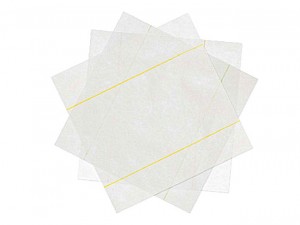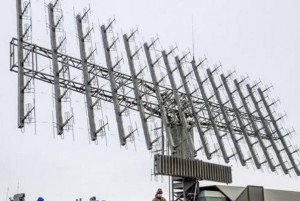Applications in printed circuit boards
In the manufacturing process of printed circuit boards (hereinafter referred to as PCB), aramid fibers are used to synthesize high-density electronic chip lead supports. This type of support has strong tensile properties, so it can avoid copper sheets and resin substrates after being heated. problems of separation. In the electronics industry, the use of aramid materials to manufacture PCB boards can enhance the strength and quality of circuit boards. This kind of circuit board has a good size and an expansion coefficient of 3×10-6/℃. Due to the low dielectric constant of the circuit board, it is suitable for high-speed transmission of lines.
Compared with glass fiber materials, the mass of this circuit board is reduced by 20%, thus realizing the manufacturing goal of light weight and small system of electronic equipment. A Japanese company has developed a PCB board with better stability, higher flexibility, and stronger moisture resistance. In the manufacturing process, aramid fibers are used in the meta-position, which speeds up the preparation of epoxy-based resin materials. Compared with the application of the opposite material, it is easier to process and has better moisture absorption performance. PCBs made of aramid fibers are light in weight and strong in performance, and can be used in smartphones and tablet computers. In addition, current circuit boards based on aramid fiber with multi-layer structure can package high-density electronics, which are suitable for high-speed transmission of circuits and have been widely used in the military industry.
Applications in Antenna Components
Because the aramid material has good dielectric properties, it is applied in the radome parts, which is thinner than the traditional glass radome, with good rigidity and higher signal transmittance. Compared with the half-wavelength radome, the radome in the interlayer position uses aramid material to make the honeycomb interlayer. The core material is lighter in weight and higher in strength than the glass core material. The disadvantage is the cost of manufacturing. higher. Therefore, it can only be used in the manufacture of radome components in high-end fields such as shipboard radar and airborne radar. American companies and Japan jointly developed a radar parabolic antenna, using para-aramid materials on the radar reflective surface.
Since the research on aramid fiber materials started relatively late in my country, the technology has developed rapidly. The currently developed satellite APSTAR-2R uses a honeycomb interlayer as the reflective surface of the antenna. The inner and outer skins of the antenna use para-aramid materials, and the interposition uses honeycomb aramid. In the manufacturing process of the aircraft radome, para-aramid is used to take advantage of the good wave-transmitting performance of this material and the low expansion coefficient, so the frequency of the reflector can meet the dual requirements of its own structure and function. ESA has developed a two-color sub-type reflector with a diameter of 1.1m. It uses a meta-honeycomb structure in the sandwich structure and uses aramid material as the skin. The epoxy resin temperature of this structure can reach 25°C and the dielectric constant is 3.46. The loss factor is 0.013, the reflection loss of the transmission link of this kind of reflector is only 0.3dB, and the transmission signal loss is 0.5dB.
The two-color sub-type reflector used in the satellite system in Sweden has a diameter of 1.42m, a transmission loss of <0.25dB, and a reflection loss of <0.1dB. my country’s Institute of Electronics has developed similar products, which have the same sandwich structure as foreign antennas, but use aramid materials and glass fiber composite materials as skins. The reflection loss of this antenna in the transmission link is <0.5dB, and the transmission loss is <0.3 dB.
Applications in other fields
In addition to the applications in the above fields, aramid fibers are also widely used in electronic components such as composite films, insulating ropes/rods, circuit breakers, and brakes. For example: In a 500kV transmission line, use insulating rope made of aramid material instead of insulating suspender as a load-bearing tool, and use insulating rope to connect the screw rod, which is conducive to promoting a safety factor above 3. The insulating rod is mainly composed of aramid fiber and polyester fiber intertwined, placed in a vacuum, immersed in epoxy resin material, and shaped after curing. It has good corrosion resistance during use, light weight and higher strength, and this material has good insulation performance. In the 110kV line, the operation of using insulating rods is relatively frequent, and its mechanical strength is high during application, and it has good dynamic fatigue resistance characteristics. In the manufacture of electrical machinery, the use of aramid fiber materials can improve the strength of components and prevent serious wear on the surface of molding replacements. It can replace glass fibers in electrical equipment. The fiber content of aramid fibers is 5%, and the length can reach 6.4mm. The tensile strength is 28.5MPa, the arc resistance is 192s, and the impact strength is 138.68J/m, so the wear resistance is higher.
All in all, aramid materials are widely used in the field of electrical insulation and electronics, but they are also facing difficulties. The country should carry out projects such as transformers and power transmission equipment to promote the promotion and application of this type of material in electrical insulation, and continuously reduce technical applications and foreign products. gap between. At the same time, high-efficiency applications in circuit boards, radar and other fields should be encouraged to give full play to the advantages of material performance and promote the better development of my country’s electrical insulation and electronics fields.
Post time: Mar-06-2023


